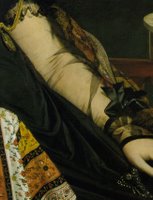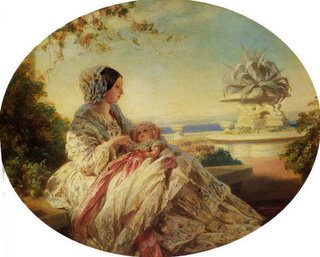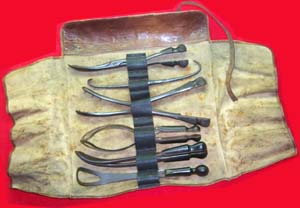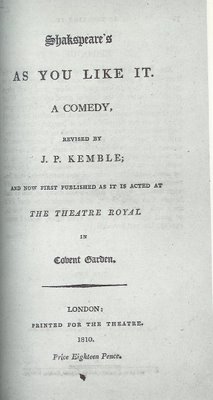I wish I knew… how does anyone start a new book? I know some writers swear by creating collages. Jennifer Crusie wrote this article about it, and I was inspired to start one last weekend but then didn’t have the time to hit the dollar store or the thrift store. But I did mess around online a bit. So here, for what it’s worth, is the embryonic creative process for a book that may or may not be called The Story of Miss O.
My off-the-top of my head, clunky notes are in italics:

Winter late afternoon, puddles icing over. Late January. Road between trees, gray, dun landscape. Ruts in road, mud, ice. Light fading.
It’s very difficult to find landscapes of bad weather–might have something to do with the fact that Constable et al only liked to be outdoors in the summer, and who can blame them. Similarly it’s quite difficult to find an image of ordinary gloomy winter weather rather than the picturesque. I don’t think there’s snow on the ground, but there may well be a frost setting in. So something like this, but with less snow, is good. I like the light in this pic.

Hero is in dogcart, trap (note to self: research vehicle or make it up, guess which I’ll pick). He’s come from London for the reading of a will, and at the moment I believe he’s the lawyer, the youngest son of an aristocratic family.
And he looks like, or something like, this gent (courtesy of Elizabeth Vigee-Lebrun, purely because there’s a huge stash of portraits all in one place). The portrait is of a Russian aristocrat (equal opportunity casting). He is nameless at the moment.
 As the trap is about to make a turn at a crossroads, a woman approaches. Yes! It’s the heroine, wearing a horrible assortment of drab clothes (she’s in mourning and has dyed something black). As she lifts her skirt to avoid a puddle she reveals a grubby petticoat and a gray woollen stocking collapsing over the top of one boot. So she’s much the same color as the landscape, except for her hair, chopped short, and red gold.
As the trap is about to make a turn at a crossroads, a woman approaches. Yes! It’s the heroine, wearing a horrible assortment of drab clothes (she’s in mourning and has dyed something black). As she lifts her skirt to avoid a puddle she reveals a grubby petticoat and a gray woollen stocking collapsing over the top of one boot. So she’s much the same color as the landscape, except for her hair, chopped short, and red gold.
And here she is, cleaned up (very cleaned up–Russian royalty). Her name is probably something like Iphigenia, Cassandra, Constance, Sophronia (did I make that last one up?), Theodosia, Theodora.
Finally, a poem I remembered, and which is of relevance to the heroine (The Ruined Maid by Thomas Hardy), because technically she’s ruined, and therefore able to make some, ah, interesting choices when she inherits some money. Here’s an overall image for the book (i.e., what I’d like to have on the cover in an ideal universe):

“I wish I had feathers, a fine sweeping gown,
And a delicate face, and could strut about Town!”
“My dear a raw country girl, such as you be,
Cannot quite expect that. You ain’t ruined,” said she.
So where do I get my ideas? Well, actually, there’s this website… Where do you get your ideas?
Janet







